Under-used and underrated, simple incandescent bulb holders, the kind you’d find in a hardware store, make a terrific cheap trick when one needs a broad, continuous light source. As camera sensors become more sensitive and produce less visible noise, less light will be needed for successful video capture as well.
Although 100 and 75-watt bulbs have been phased out, it’s still possible to get a nice range of lights, and you should have at least one each of 300, 150, and 60 watt lamps. A selection of inexpensive aluminum reflectors is also a good idea. In this image, the largest reflector holds a 300-watt bulb. A wire bulb guard is provided to protect the bulb from impact damage but shouldn’t be used for photography because the wire will cast a shadow.
Lights
Here are a few ways to approach a one, two, or three-light scenario:
Using the black indoor/outdoor rug as a background (see chapter 13), I clamped the 300-watt bulb and reflector to a boom and aimed it into my bookend bounce (see chapter 19). Aside from a difference in intensity, the light performed exactly like a strobe, and just as predictably. The light coming over the top was about 2 f/stops brighter than the light bounced back from the card. If I’d put up a lighter background and a mirror to gobo the flare, I’m pretty sure the reflection would be about 1 f/stop brighter.

Clamp lights and reflectors are available at most large hardware stores.
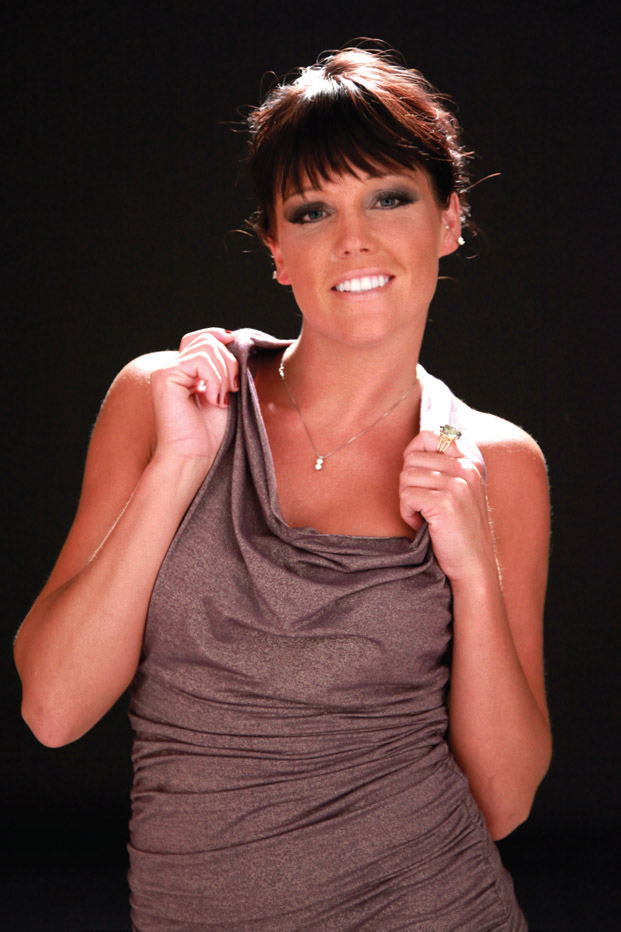
The bookend bounce is a perfect modifier for an incandescent clamp light.
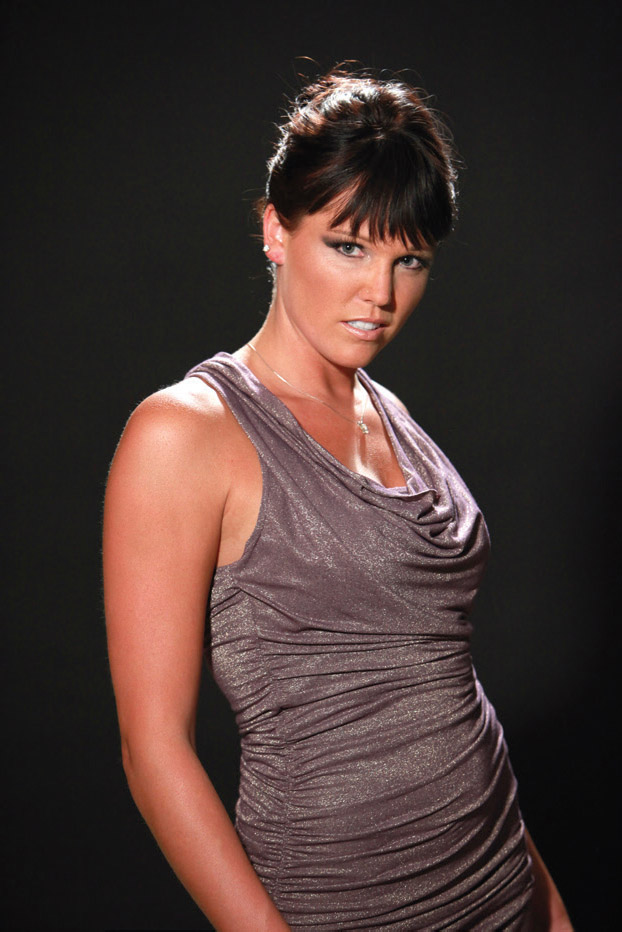
You can control the strength of clamp lights by dimmers or distance. Distance is better for consistent color.
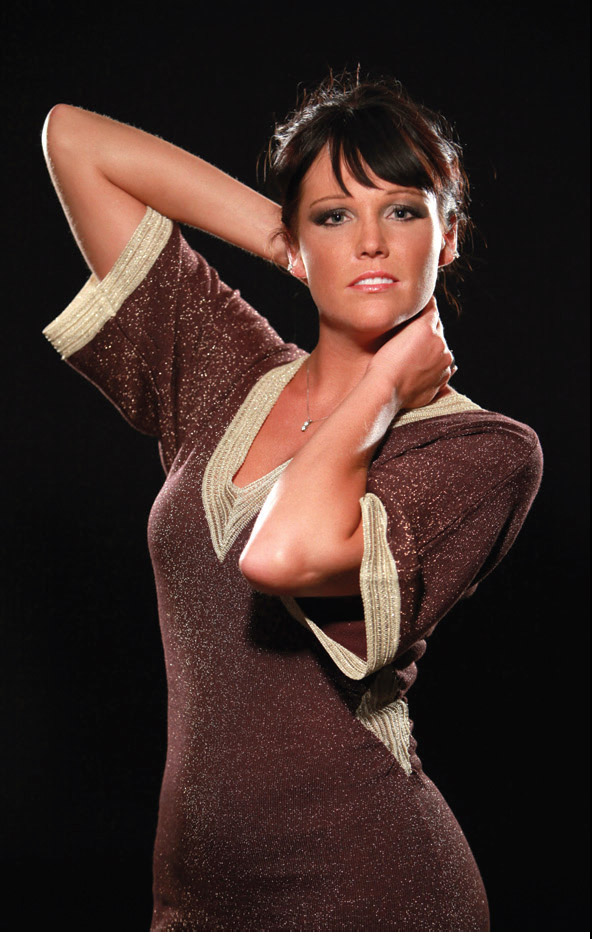
Play with distance or swap bulbs or reflectors to change the look of the image.
I used one 150-watt lightbulb for her face and a 300-watt bulb for her hair and shoulders. Instead of letting the upper light blow out all the highlights, I raised it high enough to diminish its strength to +⅔ stops, not too bright to retain some detail.
Three lights were used this time. This is a versatile setup because you can vary the output of the lights in each position just by swapping one bulb for another or changing the distance of the light to the subject. I had one light at camera left to edge-light the model’s arm and hair. Another light was placed high at camera-right, and a third light was set over the camera to light her face.
Another option is using work lights, which are available at most hardware stores. They are a bit more expensive but brighter and perhaps more predictable. These units are fired by quartz halogen lamps that last quite a long time without exhibiting a major color shift. If you were considering removing all furniture from a room before repainting it, you might wish to buy a couple of these bad boys so you could see what you’re doing.
These lamps are really bright for their size, and they are hot. You’ll need to exercise caution when working with them as you, your subject, or your studio could feel the wrath of several hundred watts of concentrated heat. In other words, just be careful with the damn things.
A single 750-watt unit will throw very nice light all by itself. You’ll want to place it far enough back from camera, and high enough so its brightness won’t cause your subject to visit an emergency ophthalmologist and attorney, in that order, after the shoot. It really is beautiful light, just be aware of the discomfort it might cause a subject and place it accordingly within the set.
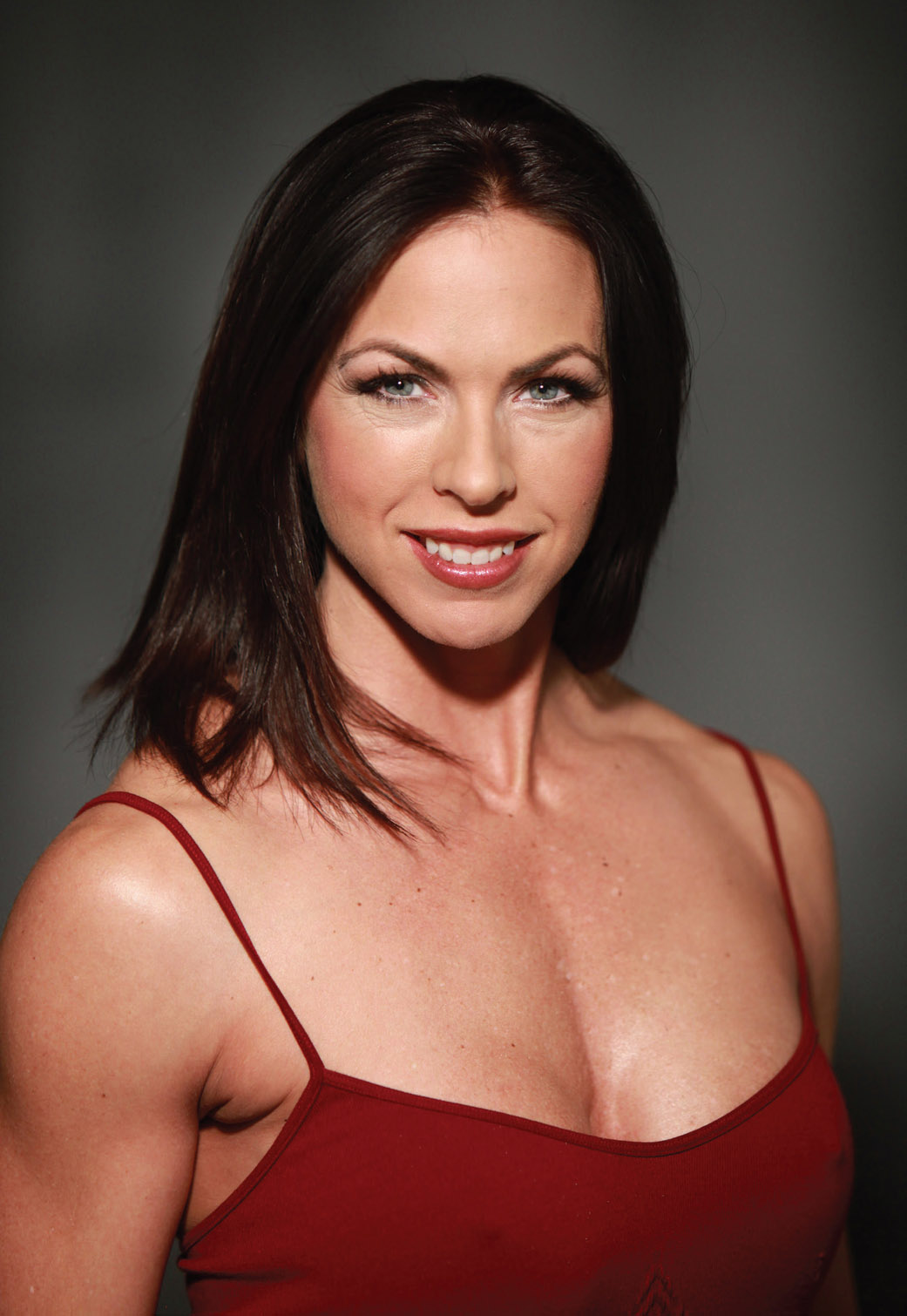
This was a one-light scenario wherein the light and the subject were strategically placed for perfect light on both.
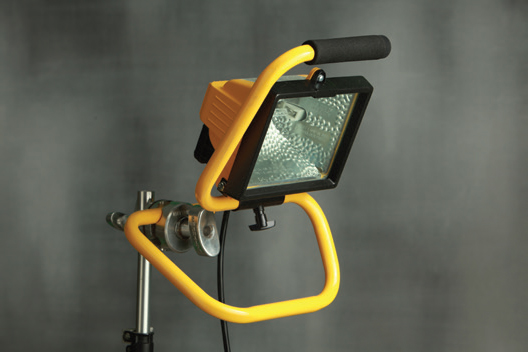
A typical 750-watt shop light. Note how it’s attached to the stand with a Matthews clamp.